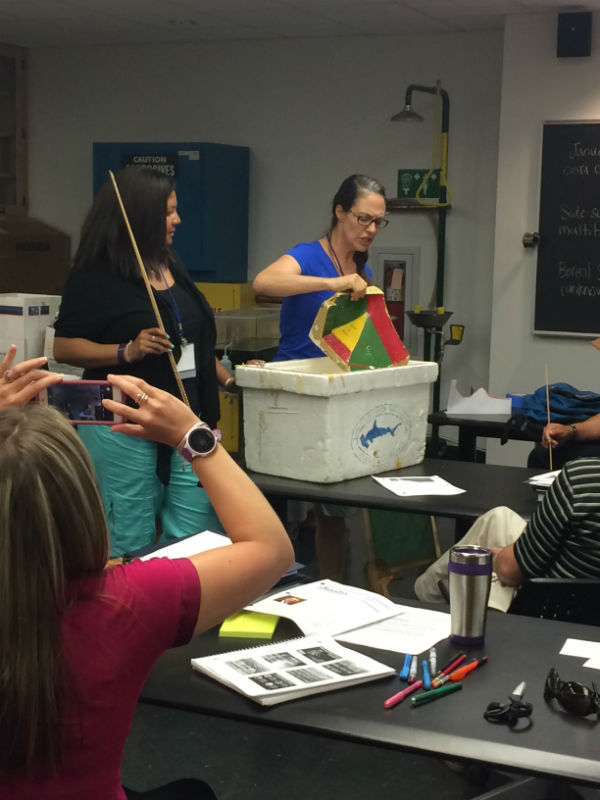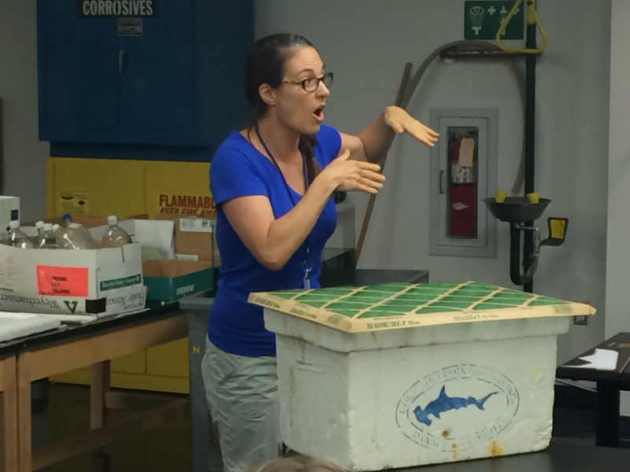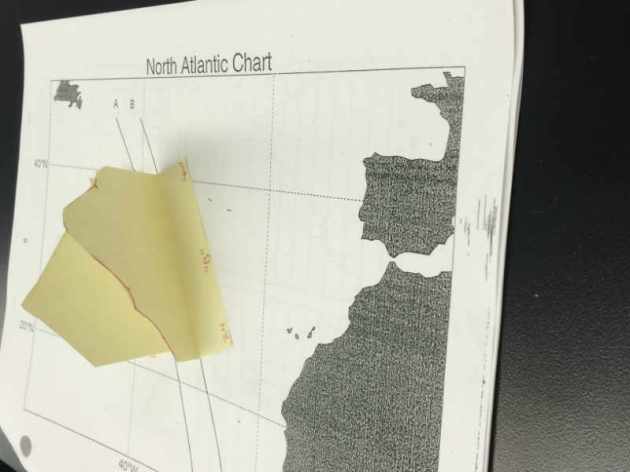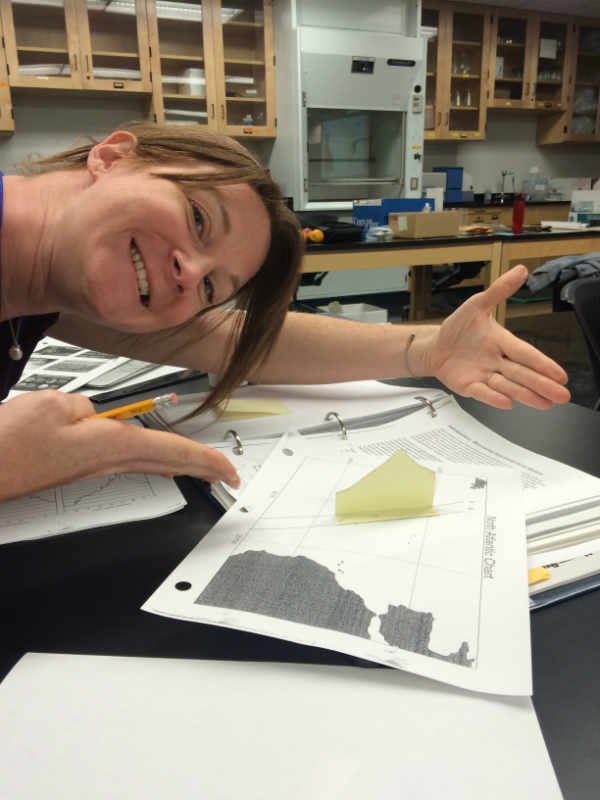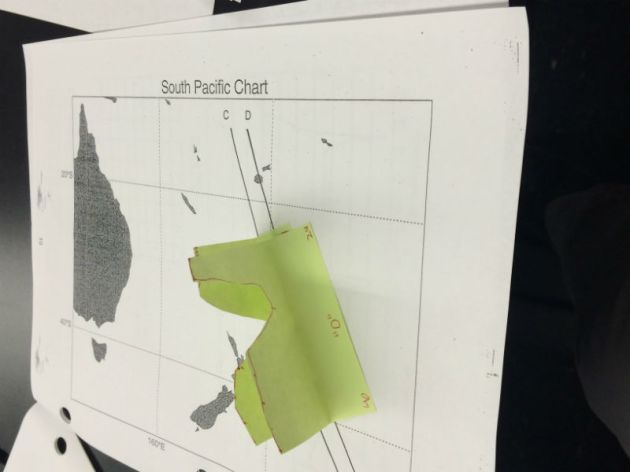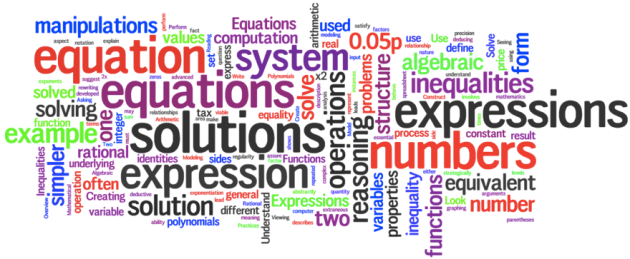 Look at this picture. See everybody smiling? How can you NOT smile when you’re in the field, dressed up in waders, and stomping through the water like a 4-year-old? (This may be truer of males than of females, though I’ve found that most teachers and students love doing science outdoors.)
Look at this picture. See everybody smiling? How can you NOT smile when you’re in the field, dressed up in waders, and stomping through the water like a 4-year-old? (This may be truer of males than of females, though I’ve found that most teachers and students love doing science outdoors.)
How does this compare with what science is actually like in our schools? The comparison is not favorable. Most science classes are lecture-and-calculation. As education budgets get cut, science budgets for supplies get cut, so there are fewer demonstrations or hands-on experiments. In addition, many charter schools are in facilities that make no allowance for a real science classroom with running water, hoods, ventilators, and disposal of toxic chemicals, so there’s not a lot of student work. Instead, it’s mainly lecture, note-taking, some on-line research, and worksheets. In short, boring!
Why do we do this when we could kindle an undying passion for finding out stuff about nature? A big answer, I think, is that the science standards that we’ve been using for the past 20 years are impossibly broad. The idea seems to be that, since most students aren’t going to take another course in the field, we need to give them the broadest exposure possible. The result is much like the Advanced Placement courses: knowledge that’s a mile-wide and an inch deep, and frankly, not very interesting knowledge at that. But, hey, we hit all the standards before the year-end exams, right?
This alone is good reason to junk most of the Every-Child-Left-Behind testing regime (yes, yes, I know it’s actually “No Child Left Behind,” but since the law is a complete failure, I prefer to give it an honest name). It’s foolish and silly to let a test, and a bad one at that, drive the curriculum. So what’s an alternative that might keep student interested?
Well, another reform to the science curriculum might be to narrow it, while at the same time actually teaching the students something that they had to use in a real-life situation. As it is right now, most students get exposed to pollution or acidification of water sources by looking at a bunch of equations that many don’t understand in the slightest, like this:

Imagine, instead, of what the students might do if they had to go out and monitor local water supplies and test them for pollutants or imbalanced pH. Would you rather be doing what you see up above, or actually doing something in the field, like this?

If you chose the former, good for you, though most students would definitely opt for the latter field situation. It’s more immediate, it’s real, and they have to use what they know to solve the problems. It would engage and inspire them, and I’m convinced would produce much better results. Back in the 60’s, they called this “relevance.” Many sneered at its application to science, but why on earth would you want to study something you can’t apply to the world around you? To dismiss relevance is to deny human curiosity, which is the driving force of science. This is what I want my students to look like when doing science:
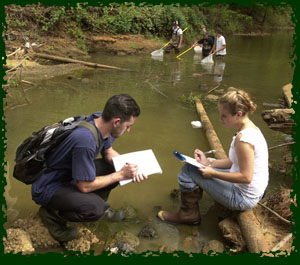
Thus, another possible reform is to keep the existing sequence of biology, then chemistry, then physics, but narrow the curriculum and have the students work on a bunch of real, practical problems in some depth. Instead of a lot of rarified, boring, and forgettable factoids, they’d have a real understanding of the world and the process of doing science.
Sound great. Hard to do, because there’s no textbook that does this. We have no existing curriculum that’s widely used that has a reasonable scope combined with depth, which means teachers will have to make some hard decisions about what they teach so that they have enough time to do develop some really good, interesting hands-on experiences for their students instead of worrying about covering a curriculum that’s been broaden to the point of triviality. Further, if the silliness about using end-of-year test scores to evaluate teachers, what incentive do teachers have to do anything other than help the students cram and memorize enough miscellaneous facts to do well on a shallow multiple-choice exam? To implement a project-based learning program like this would require a sea-change in the way we approach science and our willingness to fund it adequately. I’m not remotely convinced that we’re there, yet, either as teachers or as a public.
Knowing very little about a lot is not rigor. It’s rote memorization with no analytical skills being imparted. It’s unworthy of being called education. We frankly ought to be ashamed that we’re forcing our children to eat so much thin gruel when they could be dining on really meaty and difficult problems that would capture their interest.
In all honesty, I don’t think this proposal—narrowing the curriculum and developing of series of real-world problems with which to teach the subject—will work in the current industrial structure of American education. However, no analysis would be complete with at least mentioning it.
This proposal has the further problem that it presumes that students have adequate math skills for the course they are taking. I had not originally planned on interweaving the math issue so closely with the science issues, but as I’ve developed my thoughts, the two are clearly inseparable. You can’t solve one without having a viable solution to the other.
Next: integrated science and the NGSS (Next Generation Science Standards)





